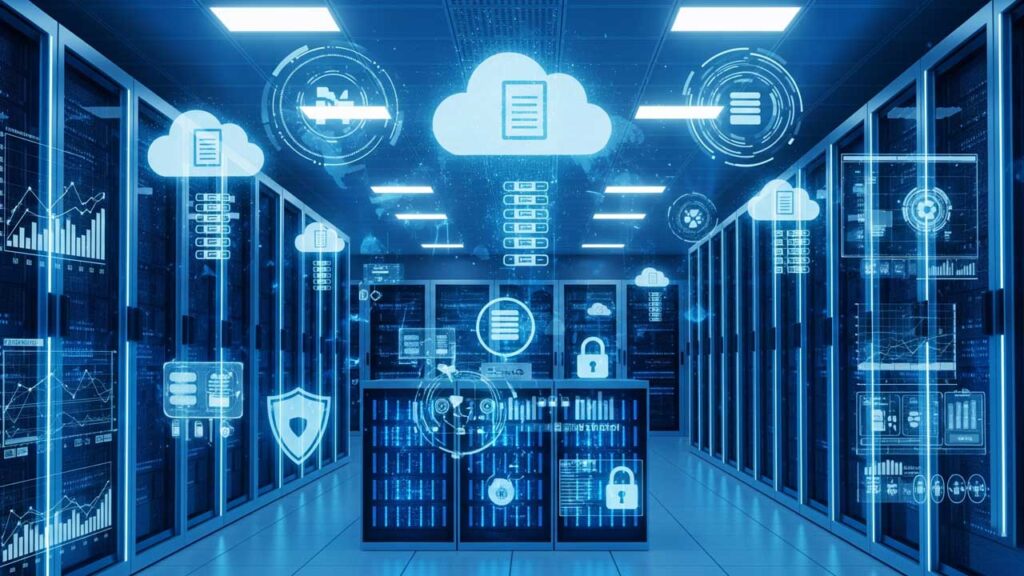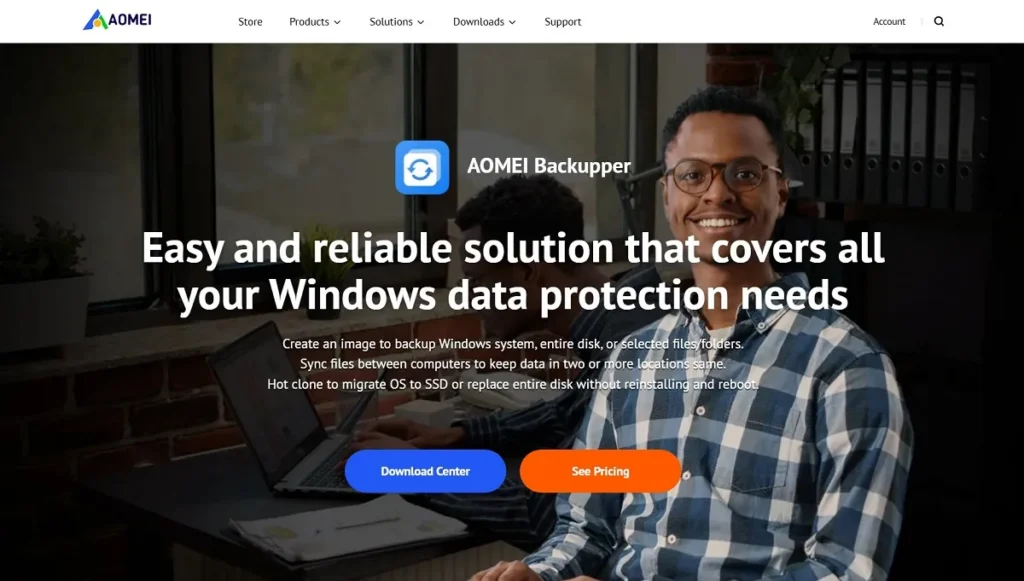
In a world where digital operations are the lifeline of business continuity, data protection and system availability have become non-negotiable. The risk of data loss, cyberattacks, or system failure is too great to ignore. In 2025, backup and availability software has moved beyond just storage and retrieval. It now encompasses intelligent automation, hybrid cloud integrations, ransomware protection, instant recovery, and compliance management.
Table of Contents
This article dives deep into the top backup and availability software solutions of 2025. Each tool has been selected based on its reliability, scalability, feature set, and user satisfaction.
Why Backup and Availability Software Is Critical
Whether it’s a small business or a large enterprise, losing access to critical data can be catastrophic. Backup and availability solutions ensure that data is not only saved in secure environments but also readily available in case of an outage, failure, or breach. These tools enable organizations to meet SLAs (Service Level Agreements), compliance standards, and operational expectations with minimal risk.
Key benefits include:
- Real-time data recovery
- Business continuity during outages
- Ransomware resilience
- Multi-location backup
- Cloud and on-premises support
- Automated backup schedules
- Regulatory compliance readiness
Key Features to Look for in 2025
Backup and availability tools have evolved with time. Here’s what you should expect from leading platforms today:
- Instant Recovery: Minimize downtime with tools that support near-instant data recovery.
- Cloud Integration: Seamless integration with AWS, Azure, Google Cloud, and hybrid environments.
- Immutable Backups: Protection against ransomware by storing backups that cannot be altered.
- AI-driven Automation: Smart workflows and predictive alerts using machine learning.
- End-to-End Encryption: Secure data in transit and at rest.
- Multi-tenancy and Role-Based Access: Especially important for MSPs and enterprises.
- Disaster Recovery as a Service (DRaaS): Comprehensive recovery plans as a managed service.
Let’s explore the top tools that exemplify these capabilities.
1. AOMEI Backupper – Easiest Backup, Clone, Sync Software

AOMEI Backupper is a comprehensive and reliable data protection and disaster recovery solution designed for Windows PCs and Servers. It simplifies backing up, syncing, and cloning your critical data. The software allows users to create system images that back up the entire Windows operating system, selected partitions, or specific files and folders. This ensures that in the event of a system crash or data loss, you can quickly restore your computer to an earlier, stable date, minimizing downtime.
Key Features:
- System/Disk Backup and Restore: Creates a complete image of your Windows OS or your entire hard drive, enabling full recovery in case of system failure.
- File/Folder Sync: Automatically synchronizes files between two or more locations (e.g., local disk, external drive, NAS, or cloud) using methods like real-time or mirror sync.
- OS Migration/Disk Clone: Allows for hot cloning of the operating system or an entire disk to a new drive (like an SSD) without interrupting work or requiring OS reinstallation.
- Scheduled/Differential/Incremental Backup: Supports various backup modes, including setting up automatic schedules and performing time-saving differential or incremental backups to only capture changes since the last backup.
- Create Bootable Media: Generates a WinPE bootable environment or recovery environment, which is crucial for restoring the system when the computer fails to boot normally.
2. Veeam Backup & Replication
Veeam continues to be one of the most trusted names in the backup and availability landscape. Known for its reliability and innovative approach, Veeam Backup & Replication in 2025 has expanded its capabilities to meet modern enterprise demands. It offers a comprehensive solution that protects virtual machines, physical workloads, and cloud-native environments, all from a single management console. Veeam excels in reducing recovery times and delivering consistent backup performance across varied infrastructures.
Key Features:
- Instant VM recovery
- Built-in ransomware protection with immutable backups
- Native support for AWS, Azure, and Google Cloud
- Automation and orchestration for disaster recovery
- Application-aware processing
3. Acronis Cyber Protect
Acronis Cyber Protect is not just a backup tool—it’s an integrated cybersecurity and data protection platform. In a single package, users get backup, anti-malware, endpoint protection, and vulnerability assessments. Designed for both businesses and service providers, Acronis excels at safeguarding endpoints and cloud workloads with advanced features like AI-based ransomware protection and blockchain data authentication.
Key Features:
- AI-based threat detection
- Secure file sync and share
- Protection for over 20 platforms, including Microsoft 365
- Blockchain-based file notarization
- Advanced ransomware protection
4. Rubrik Security Cloud
Rubrik has positioned itself as a cybersecurity-first data protection company. Its zero-trust architecture is built to withstand modern threats, including ransomware, insider attacks, and compliance violations. Rubrik Security Cloud brings advanced threat intelligence and anomaly detection to the table, ensuring fast and secure recovery. Its policy-driven automation helps enterprises scale backup and recovery across hybrid and multi-cloud environments.
Key Features:
- Immutable backups
- Threat hunting and anomaly detection
- Policy-driven automation
- Data classification for compliance
- Cloud-native integrations
5. Commvault Cloud
Commvault Cloud is a leader in comprehensive data protection and enterprise-grade disaster recovery. The platform is well-known for its deep integrations, AI-powered automation, and broad workload support, including containers, SaaS applications, and hybrid cloud infrastructure. It allows businesses to meet compliance needs while simplifying management through intuitive interfaces and analytics-driven insights.
Key Features:
- AI-driven insights and automation
- Kubernetes backup support
- Long-term data retention management
- Compliance and eDiscovery features
- Metallic SaaS backup solution included
6. Axcient x360 Platform
The Axcient x360 Platform is specifically designed for Managed Service Providers (MSPs) looking to simplify backup, disaster recovery, and file sync across clients. It offers a fully integrated and multi-tenant experience, allowing for centralized control and easy scalability. Axcient’s innovative features, like AirGap and Virtual Office, ensure quick recoveries and business continuity with minimal IT effort.
Key Features:
- Business continuity for small businesses
- AirGap backup technology
- Full image and file-level backup
- Virtual Office for instant failover
- Centralized dashboard for MSP management
7. Zerto by Hewlett Packard Enterprise
Zerto offers robust disaster recovery solutions with a focus on continuous data protection. Unlike traditional backup platforms, Zerto enables granular and real-time replication for workloads across on-premises and cloud. Its journal-based recovery system is highly efficient and supports multi-VM, application-consistent recovery—making it ideal for enterprises that cannot afford downtime or data loss.
Key Features:
- Continuous data protection (CDP)
- Orchestration for complex DR workflows
- Granular recovery points
- Journal-based recovery
- Hybrid and multi-cloud support
8. Datto Backup for SaaS & Business Continuity
Datto is a well-established name in the MSP space, offering a full suite of backup and continuity solutions. From Microsoft 365 to Google Workspace, and physical servers to cloud applications, Datto ensures seamless recovery and business uptime. Its appliance-based failover and cloud-first architecture help MSPs deliver high availability and peace of mind to their clients.
Key Features:
- Backup for Microsoft 365, Google Workspace
- Fast failover with Datto appliances
- Screenshot backup verification
- Ransomware detection alerts
- Cloud-first architecture
9. Vembu BDR Suite
Vembu provides a cost-effective yet feature-rich backup solution for SMBs and IT departments with limited resources. It supports diverse environments, including virtual machines, physical systems, and cloud infrastructure. Its easy-to-use interface and efficient performance make it a go-to solution for organizations looking for robust protection without breaking the budget.
Key Features:
- Disk image and file-level backup
- Replication for VMs
- Application-aware backups
- Offsite DR and cloud backup
- Cross-platform recovery
10. Carbonite Server Backup
Carbonite Server Backup offers straightforward and flexible protection for servers, NAS devices, and critical workloads. Its intuitive setup and hybrid backup model make it ideal for smaller teams that need reliable data protection without extensive technical knowledge. Carbonite provides powerful tools to recover from accidental deletions, hardware failures, or ransomware attacks.
Key Features:
- Hybrid local and cloud backup
- Bare-metal restore capabilities
- Secure AES encryption
- Scheduled automated backups
- NAS and server support
11. Unitrends by Kaseya
Unitrends delivers a unified backup platform combining hardware appliances and software solutions. It’s ideal for mid-sized enterprises and organizations looking for comprehensive backup with minimal hands-on management. Its intelligent automation and predictive analytics tools help prevent issues before they escalate into real problems, making it a reliable choice for IT administrators.
Key Features:
- Unified appliances with DRaaS
- Automated backup testing
- Deep cloud integration
- Predictive analytics for issue prevention
- Long-term retention
Choosing the Right Solution for Your Business
The best backup and availability software for your business depends on your size, data complexity, compliance needs, and IT resources. Here are some guiding principles:
- For Enterprises: Opt for tools like Rubrik, Commvault, or Zerto that offer high scalability, compliance support, and automation.
- For SMBs: Tools like Carbonite, Acronis, or Vembu are budget-friendly without compromising critical features.
- For MSPs: Axcient, Datto, and Veeam offer multi-tenant platforms, easy client onboarding, and centralized control.
Always consider vendor support, backup testing features, and recovery performance in real-world scenarios.
Final Thoughts
In 2025, backup and availability solutions are no longer just reactive measures—they are proactive strategies for resilience and growth. Businesses that prioritize their data protection and recovery plans today are the ones best prepared for tomorrow’s uncertainties.
Whether you’re looking for zero-downtime recovery, advanced threat protection, or cloud-to-cloud backup, the tools listed above provide the foundation for robust, future-ready data management. Take your time to evaluate your needs and select a solution that aligns with your growth, compliance, and operational goals.